The Art of Visual Listening 7: Line and Shape
(Posted on Wednesday, October 30, 2019)

Untitled by Roger Mendes (permission granted from the artist)
This essay begins our detailed discussion of the visual elements and what they can convey. Knowing how these elements communicate in art can help us determine how effectively they’ve been used—a valuable tool for assessing an artwork’s quality.
Line
Line Character: The way a line looks—thin or thick for example—is one way an artist can communicate to the viewer. Below are three examples.
- Scratchy, wispy lines have a nervous energy to them. They can communicate uncertainty and skittishness.
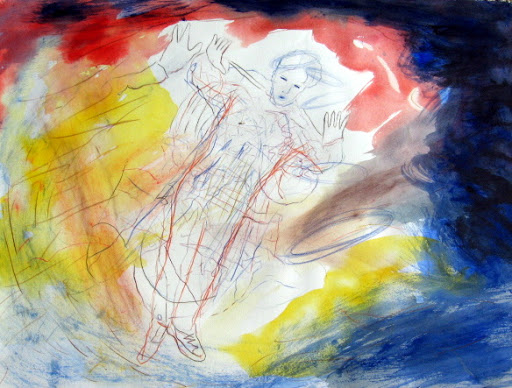
Untitled by Roger Mendes (permission granted from the artist)
- Bold thick lines are just the opposite. They communicate certainty and solidity.
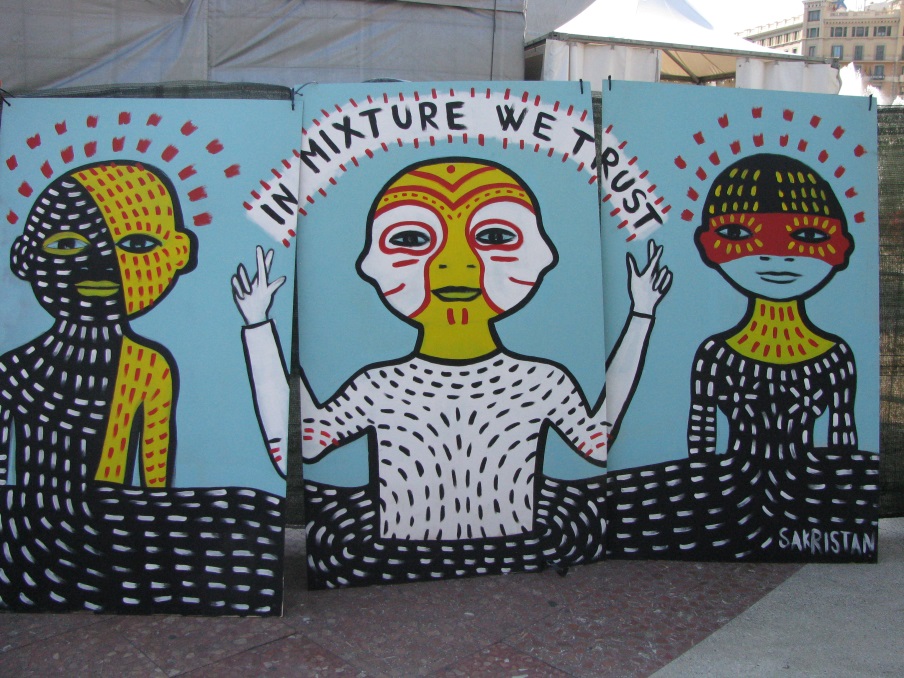 Barcelona Street Art (Raquel Sakristan) Photo by the author
Barcelona Street Art (Raquel Sakristan) Photo by the author
- Fine smooth lines have a dainty, elegant quality. They can be interpreted as delicate.
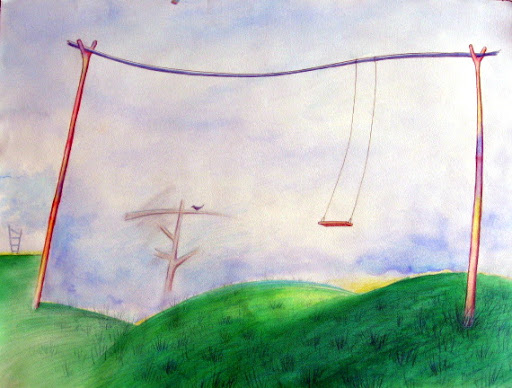
Untitled by Roger Mendes (permission granted from the artist)
If an artist used fine sketchy lines when wanting to send a strong message, it wouldn’t work as well as if she’d used thick, bold ones. And the quality of the work would suffer.
One good way to grasp the power of line character is to think about type designs. Look at the statement below done in two different typefaces. Which one gets the point across best?

Pretty clear, right? A smiley face would fit better than an exclamation point with the second example. Those curlicue lines make it hard to take the message seriously. It should be saying “have a nice day” instead of threatening bodily harm. So choosing the right line character enhances the message and subsequently the quality of the piece, whether a painting or a billboard.
Line Direction: Using the appropriate line direction also helps a work deliver its message effectively. And, like all the other visual elements, line directions in art pick up their communication cues from the world around us.
- Horizontal line direction: The most dominant horizontal line in nature is the horizon—seen as a flat, continuous line that never goes away (even if we don’t always see it). Its reliable presence is grounding, reassuring, and calming.
 Image by Free-Photos from Pixabay
Image by Free-Photos from Pixabay
When people are horizontal they too appear calm, restful, or even dead.

Image by Free-Photos from Pixabay
If we associate horizontal lines in artworks with horizontal lines in the visual world around us, they send the same kind of calming, restful (or even eternally restful) message. Whether an artwork is representational, abstract, or nonrepresentational, the connection between the visual world and the visual elements in art remains the same.
- Vertical line direction: Perhaps the most impressive vertical line in nature is found in tall tree trunks that appear to stretch endlessly toward the sky (like the Sequoias below). These massive trees seem stately and dignified.
When people stand straight and tall, like these palace guards, we get the same stately and dignified feeling.
 Terracotta Warriors Xi’an, China, 246-209 B.C.E. Photo by the author
Terracotta Warriors Xi’an, China, 246-209 B.C.E. Photo by the author
Since thick tall trees and guards at attention stand so still, they suggest a sense of timeless, too. (The Giant Sequoias of California, for example, can live for thousands of years.)
The upward thrust of the vertical line can also express growth (like tulips pushing up through the soil in springtime) or spiritual striving (like a church steeple reaching for the heavens).
All these messages—dignity, timelessness, growth, and spirituality—are also expressed in art. But how do we know which verticle is meant to give which message? We need to look at the artwork as a whole and consider what the other visual elements are saying. In a quality artwork, all the visual elements will work together to create the desired message.
- Horizontal and Vertical line directions: With the naked eye, we rarely see horizontals and verticals together in nature, but we do see them in man-made structures. And since our buildings are designed to provide shelter and to stand strong against the elements, we expect them to be stable and dependable. Put horizontals and verticals together in sculptures or paintings, the message is the same–stability.
The ancient Greek temple you see below was built over twenty-four hundred years ago, but it’s still standing! Quite a statement to the durability of horizontals and verticals.
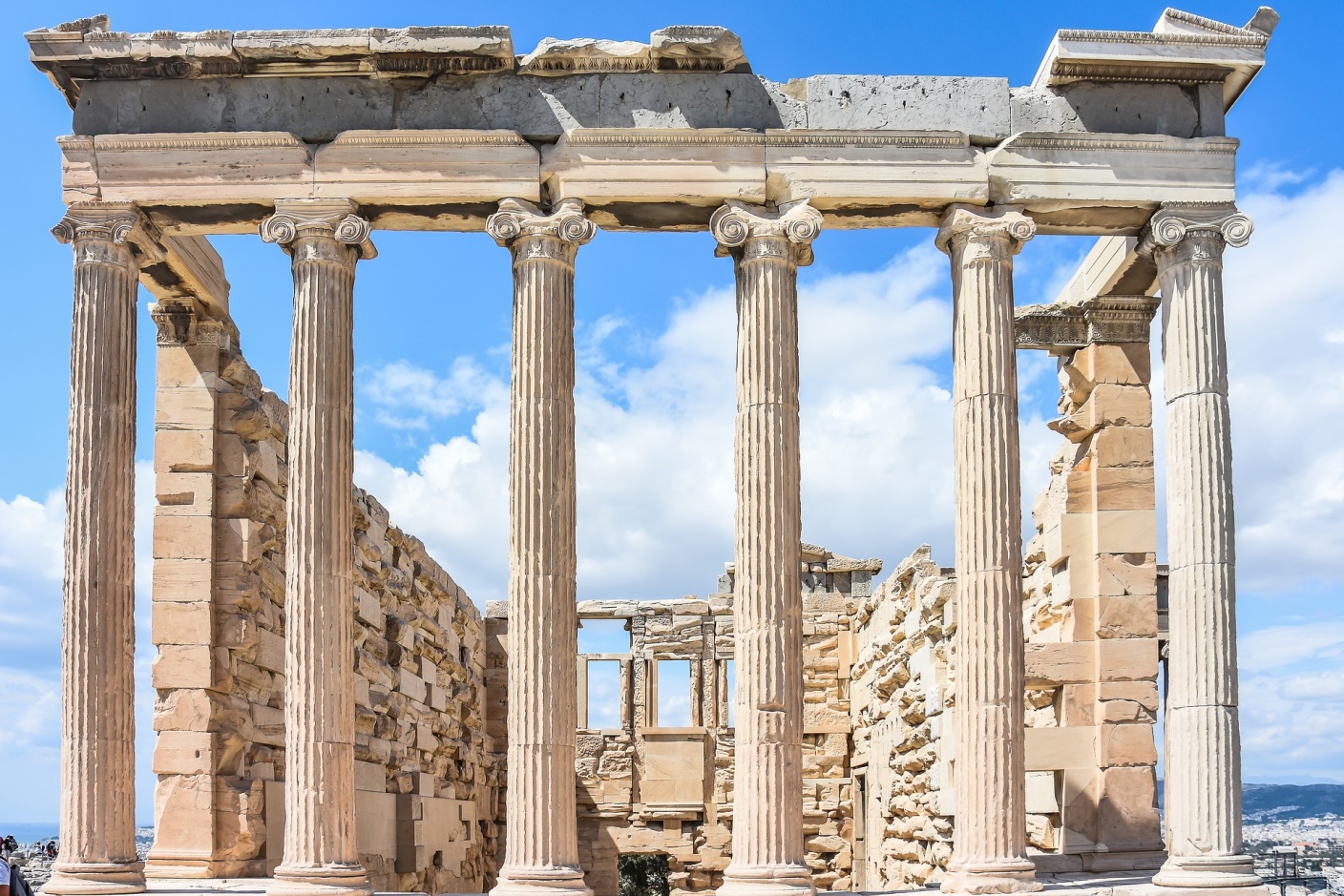 Erechtheion, Athens Greece, 420-406 B.C.E.
Erechtheion, Athens Greece, 420-406 B.C.E.
Image by Christo Anestev from Pixabay
- Diagonal line direction: Diagonal lines are unstable. They communicate movement and change. If you see a diagonal tree, you get out of its way. It’s falling. If you see a diagonal person, you get out of the way, too. He’s either falling or running. But no matter what, if you stay in his path, you’ll be mowed down.

Because of gravity, things don’t stay diagonal very long. The diagonal, based on the laws of nature, then, signals a state of instability and change in both the real world and the art world.
- The exception to the rule: When a diagonal line connects with another diagonal line to form an upright triangle, the message changes from instability to stability. In the real world, the triangle (or more precisely, pyramid) is the most stable geometric form. With its small top and large bottom, a pyramid is the hardest form to tip over. Because of this, pyramids and triangles used in art suggest the same thing—extreme stability.
Do you recognize the larger pyramid below? We discussed it in the earlier blog post Why is Art?
 Pyramids of Giza, Egypt, 2550-2490 B.C.E. Image by vcazzato from Pixabay
Pyramids of Giza, Egypt, 2550-2490 B.C.E. Image by vcazzato from Pixabay
- Jagged Diagonal line direction: Think of lightning storms.
 Image by Angela Yuriko Smith from Pixabay
Image by Angela Yuriko Smith from Pixabay
Think of earthquakes. What image do you see?

Image by Angelo Giordano from Pixabay
If a diagonal line is unstable then a jagged diagonal (multiple diagonals going back and forth) is extremely unstable. Jagged diagonals in art—just like lightning and earthquakes—tend to signal catastrophe or disaster.
- Curvilinear line direction: We see curvilinear lines a lot in nature (meandering streams, winding paths, waves lapping on the shore). They give us a sense of slow, flowing motion.
 Image by Robert C from Pixabay
Image by Robert C from Pixabay
Curvilinear lines are associated with the female form, too. And since the curving parts of the female anatomy (hips and breasts) are designed for childbearing and feeding, curvilinear lines can communicate procreation, and nurturing as well as flowing motion.
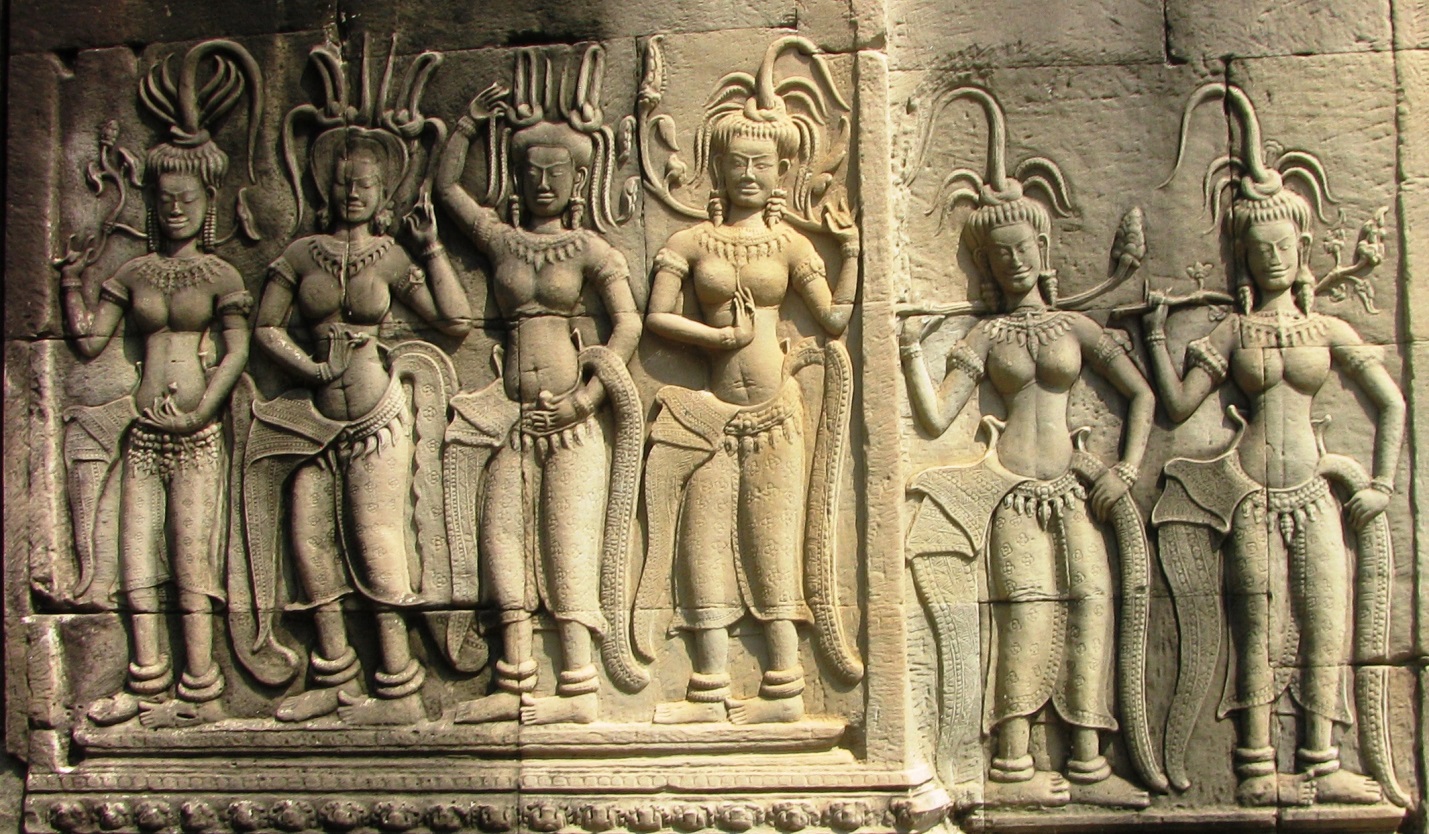 Apsaras, Angkor Wat, Cambodia, 8th-13th century Photo by the author
Apsaras, Angkor Wat, Cambodia, 8th-13th century Photo by the author
So, as you can see, there’s a lot to consider with lines. They can play very important roles in fueling the communicative power of art.
Shape
Unline line, there are only two basic categories for shape (organic and geometric) but just like line, they communicate differently.
- Organic shape: What comes to mind when you think of the word, “organic?” It’s used a lot these days and conjures up visions of nature in its purest form—uncorrupted by human meddling. Organic food promises no artificial ingredients. It’s all natural. Organically flowing ideas suggest freedom from intellectual censure.
 Image PublicDomainPictures from Pixabay
Image PublicDomainPictures from Pixabay
Organic shapes are the shapes of nature we see all around us—clouds, lakes, stones, seashells. They speak to our primal side, our instincts and emotions. And because organic shapes are made with curvilinear lines, they also allude to women. They remind us of natural processes, like fertility, sexuality, abundance and nurturing.
Armed with that information, you can see immediately what the artist of the artwork below had in mind with this tiny (4 ½ inches high) sculpture from twenty-five thousand years ago. There are no written texts from the Paleolithic period, but in this case, there seems to be no need.

Venus of Willendorf, 25,000 B.C.E
User:MatthiasKabel [CC BY-SA 3.0 (http://creativecommons.org/licenses/by-sa/3.0/)]
- Geometric shape: These shapes are calculated and precise. It requires tools to create them like rulers, protractors, or compasses. Because of this, they’re associated more with the human intellect than natural instincts. Although there are many geometric shapes in nature, most are not visible to the naked eye. The geometric shapes we see around us are usually man-made, reflecting the mental effort of planning and measuring. Geometric shapes in art, then, tend to communicate a sense of intellectual discipline and precision.
 San Gimignano, Italy Photo by the author
San Gimignano, Italy Photo by the author
This concludes my explanations of how lines and shapes communicate, but before you go, take a look at the image below and focus on only the most dominant line directions and shapes you see. Using the communicating characteristics we just discussed, which of the three choices below best describes what the lines and shapes of this work are intended to convey?
- Instability and change, catastrophe
- Man-made precision, intellectual discipline
- Nature’s reassuring, regenerating, and timeless processes
 Image by Manuel Alejandro Leon from Pixabay
Image by Manuel Alejandro Leon from Pixabay
The answer is obvious especially since we recognize the subject matter. But it’s the way the subject matter is depicted that gives us such a strong sense of reassuring timelessness. If the women were shown in the throes of childbirth, the lines and even shapes would certainly be different, and the image would have a different connotation altogether.
But what about nonrepresentational artworks? With no recognizable subject matter to fall back on, we’d need to rely entirely on the visual elements. Take a look at this piece. What do the lines and shapes tell us here?
(Hint: If you understand French or can translate the title, you’ll know the inspiration for this work.)

Feuille se reposant by Hans Jean Arp, 1959.
Image by Gerardus [Public domain]
But, of course, lines and shapes form only part of the story. The other visual elements have something to say as well. So, let’s move on to our next element—depth—and listen in.
Footnote: To learn more about any of the images above, just click the link(s) below each one.
Email Sign-Up
Enter your email address to join the mailing list.

 Image by
Image by  Buy Now!
Buy Now!

Leave a Reply